 Toowoomba,
where Peter spent most of his life, is known throughout Queensland as
the "Garden City".
Toowoomba,
where Peter spent most of his life, is known throughout Queensland as
the "Garden City".This block will be replaced by LeftMenuGaffey (orByrnes) when the page is served from a server.
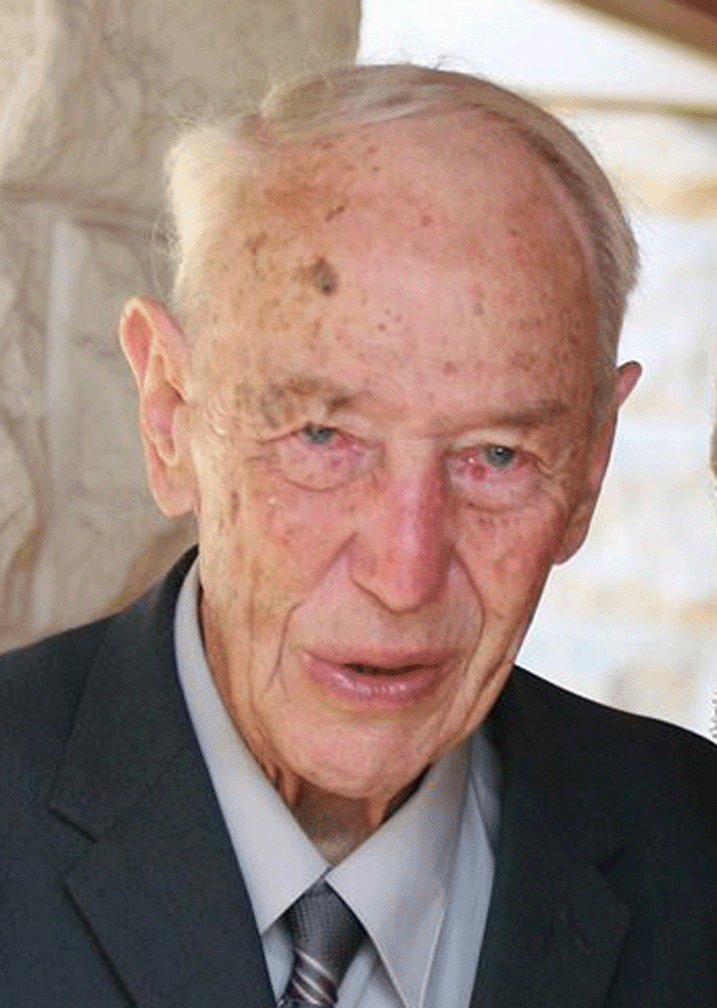
It shows:
- Peter's father, Thomas Byrnes
- His mother Lily (Dance),
- Lily and her daughter Kathleen
- Peter and five of his children arriving at his parents' home at Balmoral in Brisbane.
- Peter talking to his sister Theresa and her husband Colin Sampson,
- Peter's sister Joan Byrnes with Peter's two eldest children, Peter and Mary and two unidentified infant cousins
- Father:
- Thomas Arthur Byrnes (b 19 Oct 1883, Toowoomba Qld)
- Mother:
- Amelia (“Lily”) Dance (b 17/27 Jul, 1891, Haigslea)
- Birth:
- 29 January 1922, Ipswich, Qld
- Death:
- Saturday, 13 August, 2016, St Vincent's Hospital, Toowoomba
- Occupation:
- Biochemist, Commonwealth Health Dept.
- Lived in:
- Ipswich, 1922-1941; Sydney and Blue Mountains 1941-46; Queensland: Ipswich, Townsville, Cairns 1946-47; Toowoomba (1947-2016)
- Marriage:
- Joan Margaret Gaffey 12 Jun, 1943, St. Mary's Cathedral, Sydney
- Children:
- (son)
- (daughter)
- Gerard Vincent (b. 1948 - d. 2022)
- Catherine Joan (b. 1950 - d. 2016)
- Paul Thomas (b. 1952 - d. 2025)
- (daughter)
- (son)
- (daughter)
- Daniel Gregory (b. 1965 - d. 1984)
“Our third teacher was a kind old man who taught us very well but was fond of the bottle; so much so he never progressed past teaching second grade.”
Since he was one of 11 children, study conditions weren’t always ideal.
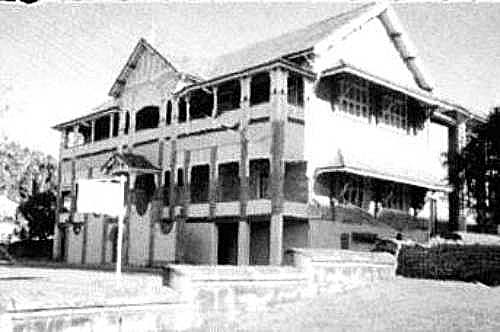
Granddad walked everywhere for his entertainment as a kid. He and his brothers would walk from East Ipswich to Colleges crossing for a swim, which was about a 10km walk. For an adventure he climbed to the top of the vacant, derelict Brynhyfryd castle in Blackstone, which was about a 3.5km walk. Against their father’s wishes, the brothers would travel home from school by walking along the train tracks as this was the quickest route. This shortcut soon stopped once their father found out.
Granddad pointed to where he had played tennis or cricket as a kid. He would point out the way he went to school from Kendall street and how he used to walk up and down his street selling milk they got from their cow to make ends meet. We must have talked over this map for hours. His memory was amazing. ......
We’d talk about football, we’d talk about life and I would often ask
him about his life story. About marriage, raising children, about
who was his favourite child. Sometimes I would try to get him to say
something slightly controversial but he was always too smart for me
and very diplomatic in responding always with a wry smile on his
face.
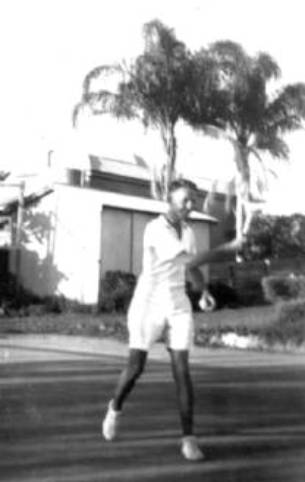
Noticing the length of the rallies, two onlookers took the trouble to count the number of times the ball crossed the net. In one game of seven points, the ball was hit 489 times. One point took 134 strokes, another 108. (.....) Some of the games prior to this, when the players were fresher, were even more protracted.
The game was called off for the day with the score at 6-4, 5-7. When it was finished on the following weekend, Peter came out victorious, 6-3 in the final set. Peter says circumstances played a large part:
"I'd had a normal week, and was quite relaxed, but Frank had had to work the night before, so was hardly rested before going on court, which made my task easier".
Peter completed his Senior (Leaving) exam at the Brothers, and although he says he “hadn’t a clue” about what he really wanted to do, started studying to be a teacher. During that year at Teachers’ College, he was paid a small student allowance – an amount that had to be repaid when he realised he wasn’t suited to the classroom.
“Needless to say”, Peter recalls, “I’d spent every penny of the allowance, so Mum came to my rescue and paid it all.”
His brother Tom, five years his senior, pointed him in the right direction for his future career:
“Tom told me that if I joined the Commonwealth public service, even as a clerk, opportunities would come up for traineeships – and they did”.
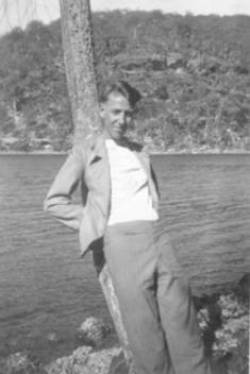
The move to Sydney was the turning point in Peter’s life. While in Sydney, he found lodgings at Randwick with the family of Gertrude Williams. Gertrude was the much-loved aunt of Joan Gaffey, and had taken her teenage niece in, when Joan left her father’s Hunter’s Hill home on the other side of Sydney. The Williams’ house was home to several relatives and this extended family helped Peter adjust to life a long way from his Queensland roots.
(left) Peter in the early 1940s on an outing to Mt. Kuringai, in Sydney’s north
It’s perhaps to be expected that the two young people, living under the same roof and still in their teens, would make a match of it. After a two-year courtship, Joan and Peter married in Sydney's St. Mary's Cathedral.
After their marriage, the couple lived briefly in Darley Road Randwick, near Joan’s mother’s family. Accommodation in wartime Sydney was extremely hard to find; they eventually found a room in the home of a woman whose husband was away fighting in the war.
They were living there at 1 Norfolk Avenue, Beverley Hills, their first child, son Peter, was born. Living in a single room with a baby was not unusual for the time, but when a second child arrived less than a year later, the time had come for them to look further afield.
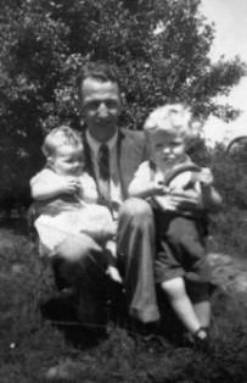
Peter travelled each day from the mountains to his work and study at Sydney University – but soon realised that the primitive life in the mountain shack with two young children was no life for Joan. The risk of bushfires was too great, and snakes were also a problem. His only alternative was to suggest Joan take the children to Queensland, to live at Ipswich with his parents, and with some reluctance, she agreed.
After his graduation, Peter was able to work for the Department of Health on a relief basis at Lismore in northern New South Wales – an opportunity he snapped up, as it meant he could travel to Ipswich at weekends to see his family.
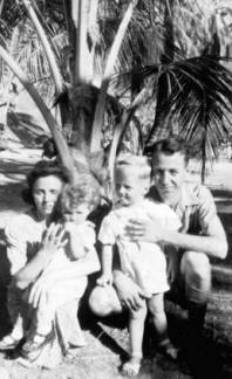
.
left: The young family on Magnetic Island, during Peter’s relief work in Townsville
When the work in north Queensland came to an end, Peter considered taking a job at the University of Queensland, but the chance of a permanent position with the Health Department in Toowoomba came up – and this time, Joan and Peter made a more permanent move to south-east Queensland.
The original Commonwealth Health Department Laboratory in Ruthven Street, Toowoomba (below left), where Peter worked, from when he arrived in Toowoomba in the late 1940s until the laboratory was transferred to a new annex in the grounds of the Toowoomba Base Hospital, in James Street. The older children enjoyed visits here while their father was working, and took a great interest in the guinea pigs kept at the laboratory for various tests.
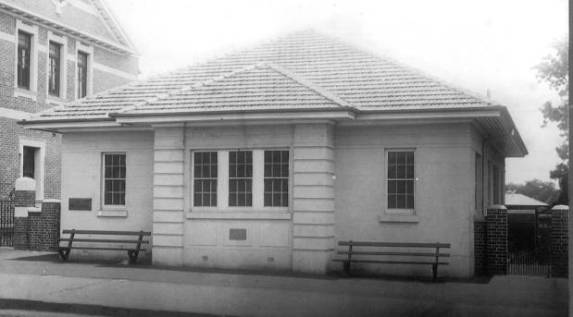
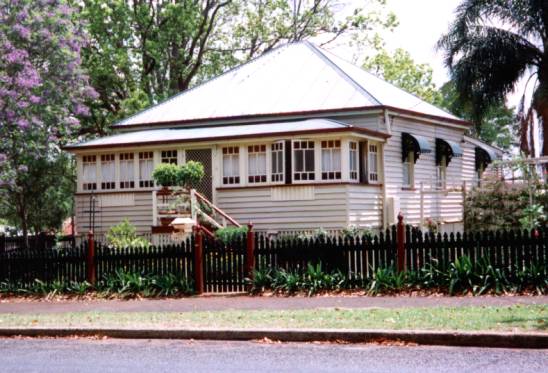
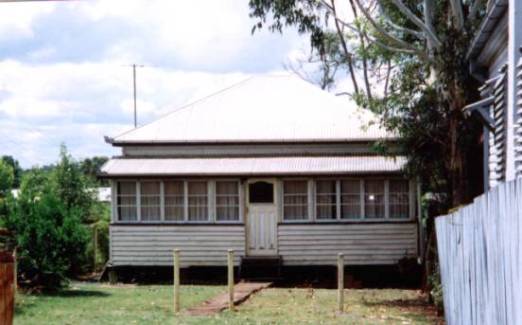
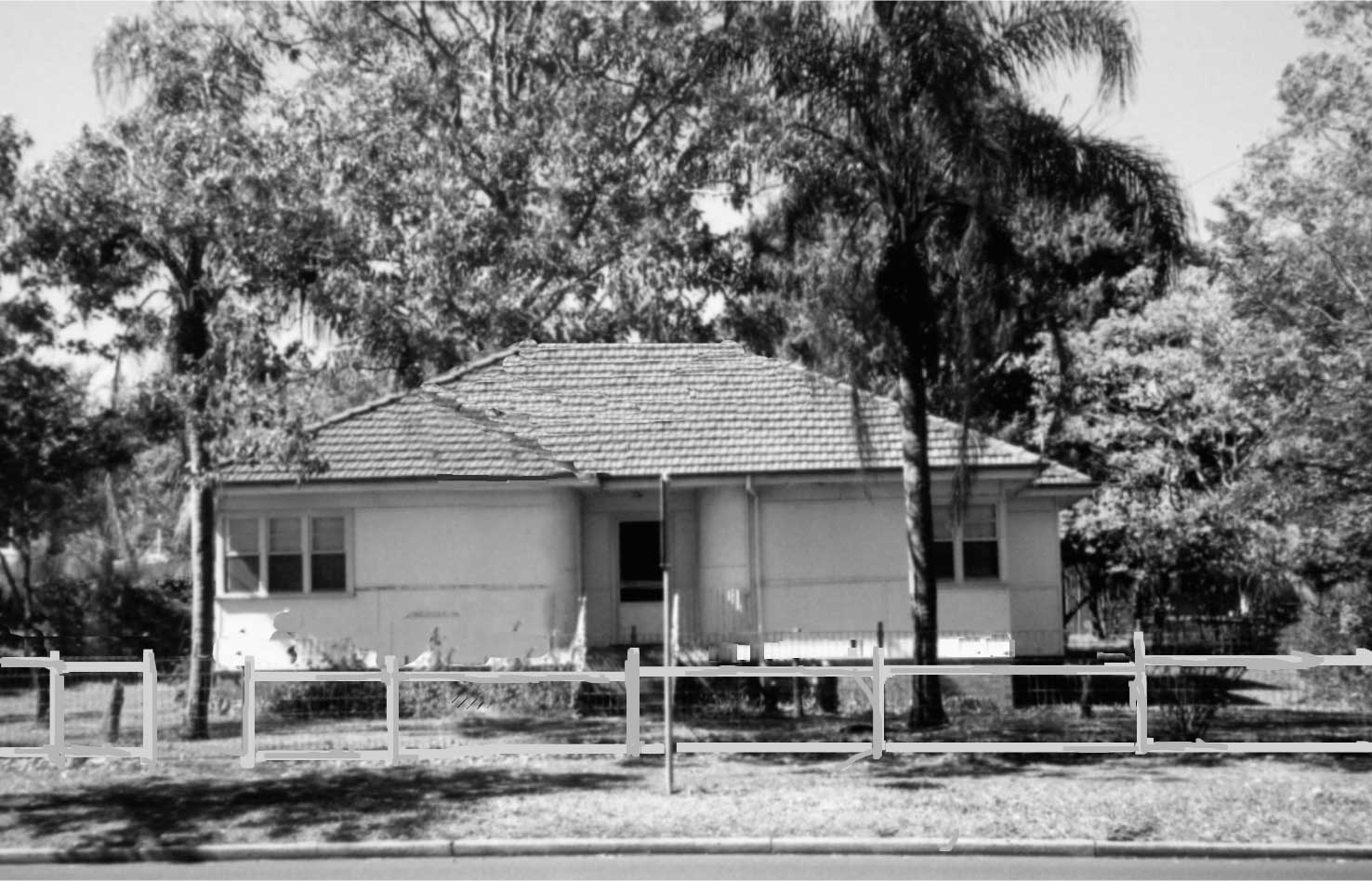
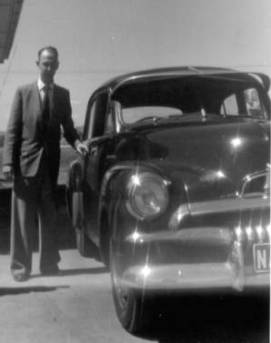
Peter described the early years in Toowoomba as 'somewhat difficult'.... "for example, we did not have a car until just after John was born in 1955. But we certainly made the most of the FJ Holden...clocking up the mileage very quickly including regular trips to Brisbane".
The FJ Holden survived the driving lessons Peter gave to his teenage children, and even survived a roll over inflicted on it by daughter Mary, during a drive home to Toowoomba from Brisbane. (Fortunately, none of the family was seriously injured in the crash – although Mary was fined for driving with an overloaded vehicle!). That car was resuscitated at the panel beaters, and was succeeded by two more Holdens, first a Kingswood, then a Commodore that served Peter and Joan well in their later years, before finally a Nissan for Peter in the 2000s.
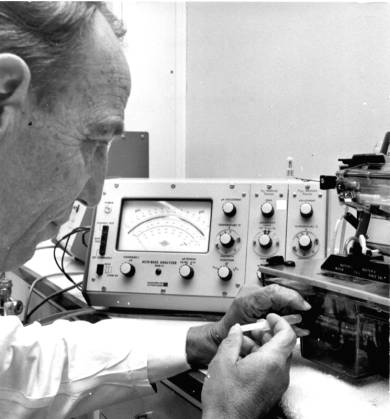
During the children’s growing-up years, Peter was constantly in demand to help with a busy homework schedule, and carried out his and Joan’s belief that all their children should be educated to best of their ability. Achievement in education was a strong motivator in the household. After primary grades at the local parish school, St. Anthony’s, the girls were sent to St. Ursula’s in Taylor Street, a college run by the Ursuline nuns, while the boys attended St. Mary’s Christian Brothers’ College in West Street.
Both schools were some distance from the family home at Harristown, and for most of the school years, transport was by bicycle, unless the children could prevail on their father for a ride in the Holden.
left: Peter at work in the Commonwealth Health Department laboratory, 1970s.
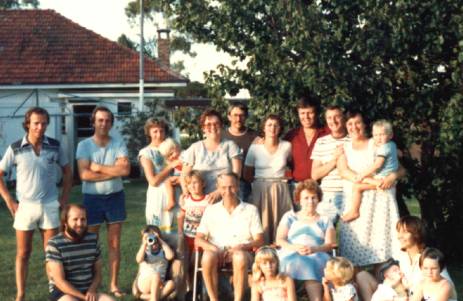
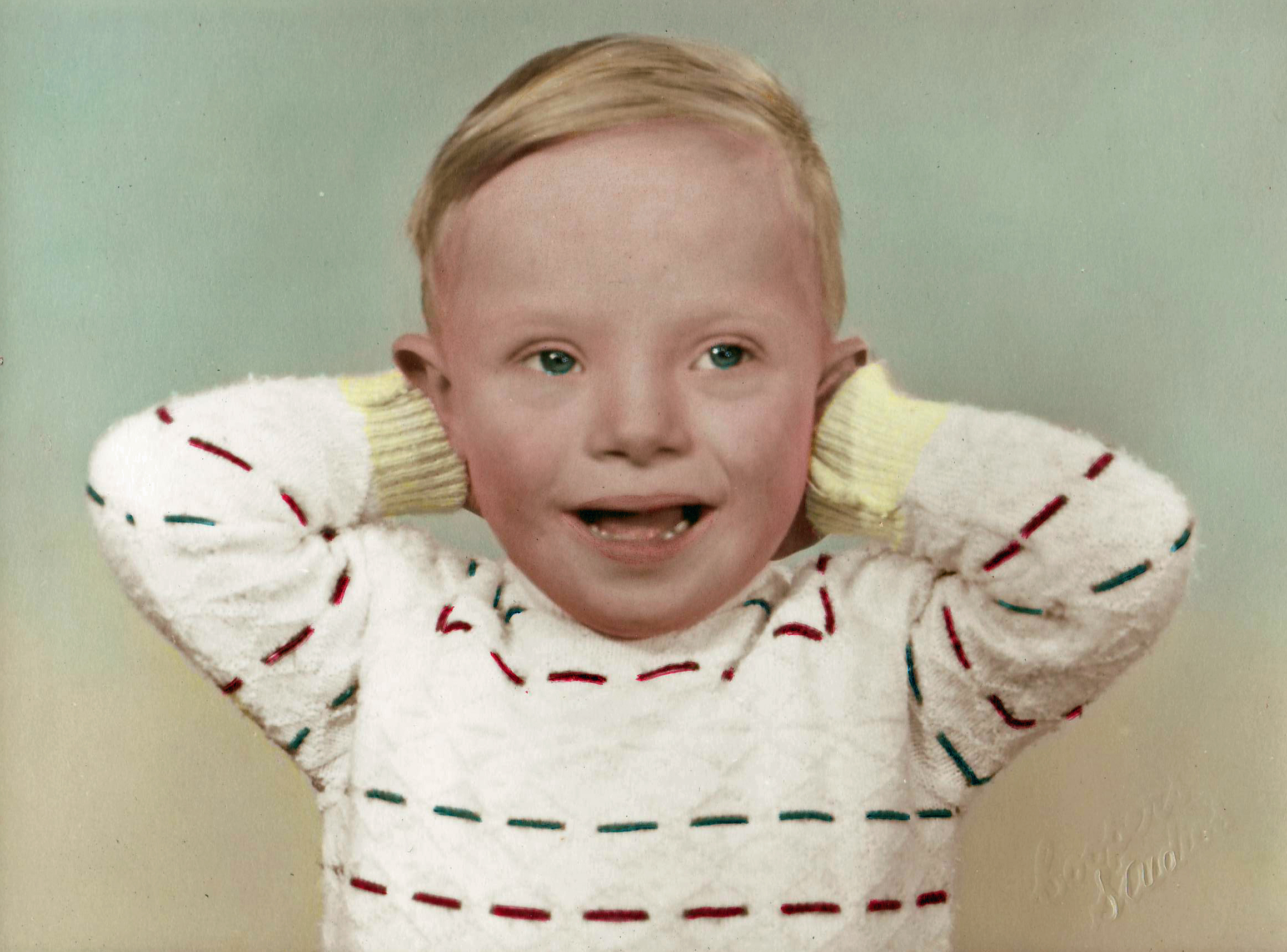
Peter and Joan's youngest child, Danny, c1969
(right): Peter's favourite Sunday morning escape – reading the papers on the front porch of 350 South Street.
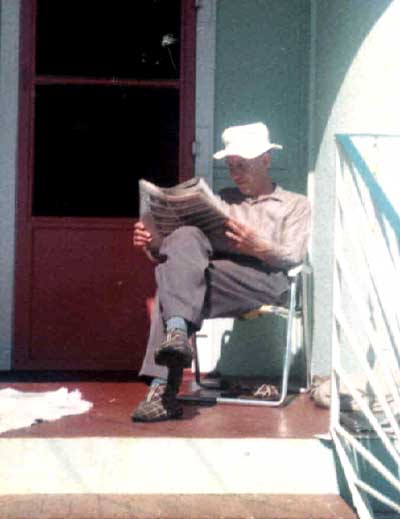
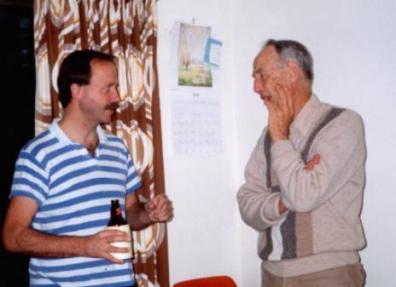
(left): Peter with son John.
After Peter's retirement in 1982, Joan, Peter and young son Danny moved to a new home in Toowoomba. The house was in walking distance of the University of Southern Queensland, and the university’s grounds and gardens - particularly its exotic Japanese Gardens -became one of Peter’s favourite walking routes.
Grandson Roger tells that retirement also gave him even more of a chance to follow the sports that he loved.
Granddad
loved to read and often when we went to visit him he would be
sitting in his favourite chair with the daily newspaper close by.
Either that or the latest sporting autobiography, in particular
rugby league autobiographies. He very much loved his rugby league
and was a big fan of the Broncos and Queensland. Although he
followed the whole NRL competition pretty closely as he had to
remain updated with the stats so that he could become the 2015
Byrnes Family Tipping Competition Champion.
Roger and his brother Craig spent many school holidays in Toowoomba....
Whenever
we walked anywhere with them they would walk hand in hand and
Granddad would always walk at a pace that suited Grandma. However,
once she was dropped off inside for her weekly appointments,
Granddad went to Olympic walking pace as we would run around doing
all the errands while we waited for Grandma. There was no looking
back for us. We just had to keep up.
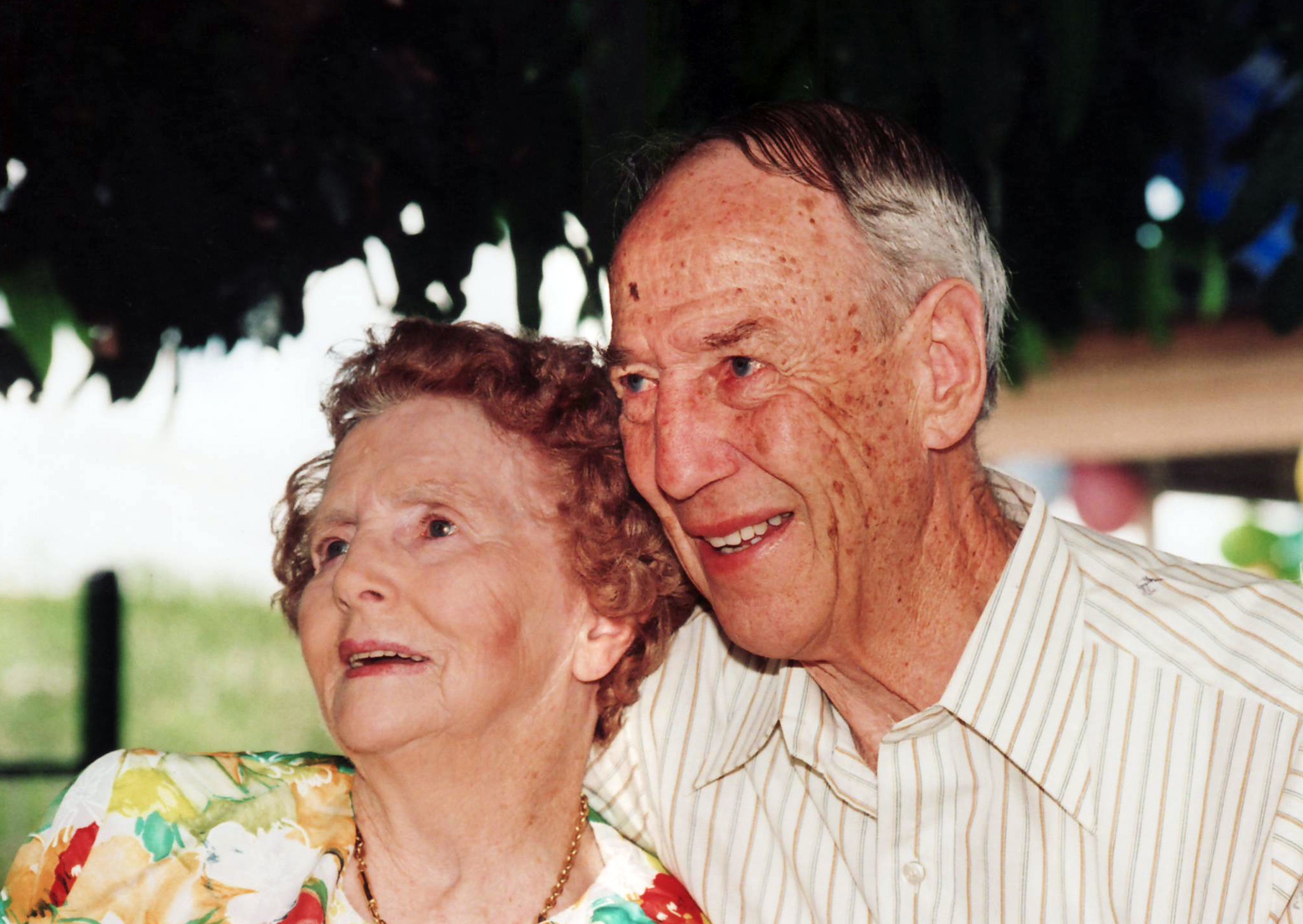
(left): Peter with wife Joan, January 1997
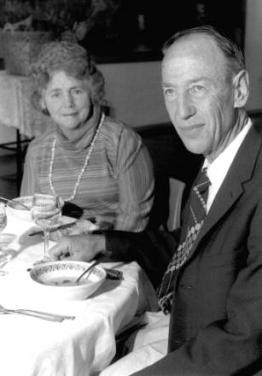
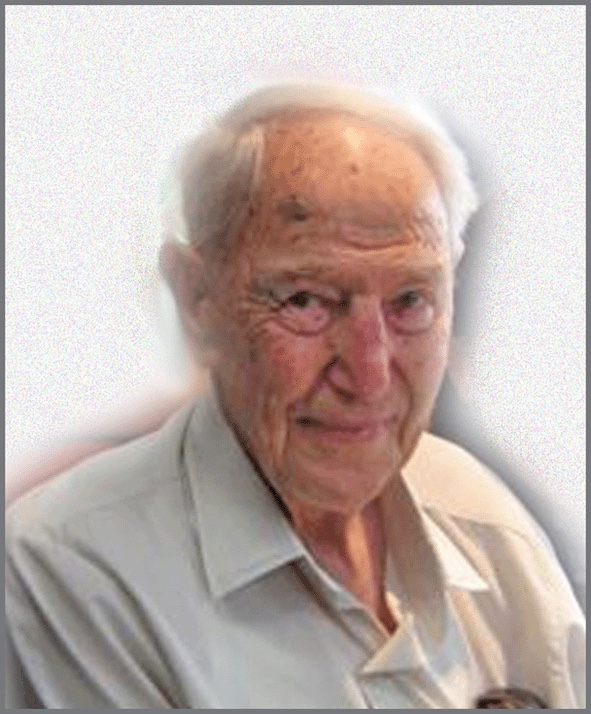
A final word from Roger:
Granddad was well respected, intelligent and kind hearted. No one
could ever say a bad word about this man. He was a true gentleman
in every sense of the word. He was the very best role model to his
sons and grandsons and he showed his daughters and granddaughters
what kind of a character to look for in a husband. He counted
everyday he lived as a blessing from God, and I thank God everyday
for having him in our lives.